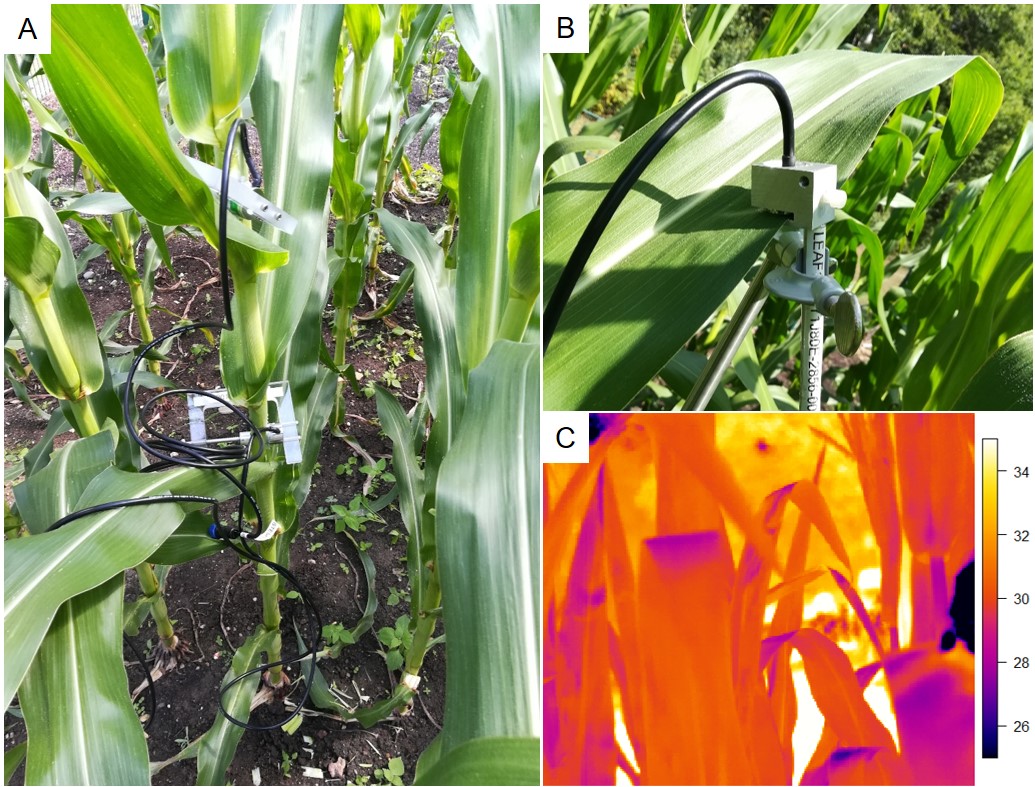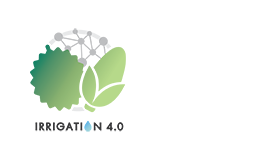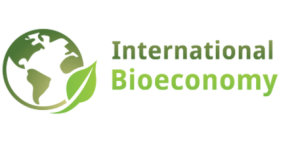Implementation of plant-based sensors for maize water status measurements

In the frame of Work Package 2 – Implementation of plant-based sensors for plant water status measurements, experiments on maize plants took place at Forschungszentrum Jülich during summer and autumn of 2020. The experimental setup included pot systems for controlled irrigation and measuring plant transpiration, including well-watered and soil water deficit conditions, or maize plants grown in the experimental crop garden of IBG-2: Plant Sciences. Plant development, including leaf growth and internode elongation, biomass accumulation and water consumption were measured throughout the vegetative stages of growth. Leaf and stem psychrometers were installed to continuously measure plant water potential with a 30 minute logging interval from a few days to three weeks in order to understand diurnal variation in water potential and the effect of drought (drying soil and high vapor pressure deficit). We found a good correspondence between psychrometer-based plant water potential measurements and those determined destructively using the regular pressure chamber. A second plant-based sensor that we tested was a thermal infrared imaging camera yielding information on leaf - air temperature differences which are considered a proxy for stomatal conductance and transpiration. We tested several approaches to obtain indices that inform on plant drought responses and the need for irrigation. Thermal imaging was further complemented with gas exchange measurements to determine the correspondence between thermal indices and stomatal conductance and transpiration. The experiments also included environment measurements to link changes in plant water potential and transpiration to above- and belowground environmental conditions such air temperature, vapor pressure deficit, radiation and soil water content. The next steps will be to model psychrometer-derived measurements of leaf and stem water potential and leaf-air temperature differences based on environmental conditions to be able to set threshold conditions for irrigation scheduling (Work Package 3).


Maize experimental setup in the crop garden of IBG2: Plant Sciences at Forschungszentrum Jülich. Two stem psychrometers were installed on the internodes of leaves 12 and 14 (A), and a leaf psychrometer was measuring water potential in leaf 14 (B). Thermal infrared image of maize leaves (C).


Maize experimental setup in the greenhouse of IBG2: Plant Sciences at Forschungszentrum Jülich. Pots were covered to enable the measurement of plant transpiration (A) while performing psychrometer measurements of leaf water potential (B) in well-watered and soil water deficit conditions. Thermal imaging setup and simultaneous measurements of leaf water potential, plant transpiration and environmental conditions (C).





